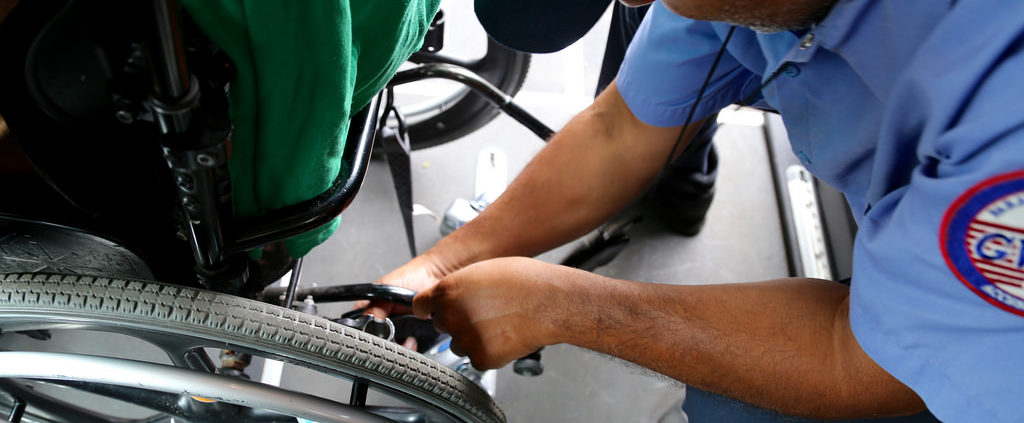AARP’s Proposed Mobility Managers Map Could Connect Seniors to Local Transportation Services
Transportation is rightly associated with independence—and it’s no surprise that many older adults and people with disabilities see mobility as a vital channel to maintaining autonomy. While it is estimated that 35 million of the 43 million adults 65 and older are licensed drivers, about 14 percent of elders do not drive. This is largely due to the effects of aging, such as hearing and vision loss, arthritis, slower reaction time, or side effects from medication, which can impair driving ability.
The number of older Americans who don’t drive will only rise as the senior population grows. And this will leave an even greater number of older adults dependent on rides from family and friends in the absence of adequate programs that provide ride service to seniors. This issue is especially troubling in rural and suburban areas, where access to public transit is not common. Limited access to transportation options isn’t just an issue for seniors in less densely populated areas though—for older adults in rural communities and crowded city neighborhoods alike, poor transit access can lead to isolation, frustration, and a decrease in quality of life.
Nationwide, a number of organizations have taken steps to address this problem, and one group in particular has an especially innovative approach. The AARP Public Policy Institute (PPI), an established policy research group, is a leader in advancing solutions to a range of issues associated with people age 50+. On the transportation front, PPI acknowledges that there is a shortage of programs offering rides and other mobility options for older adults and people with disabilities.
Mobility managers may help with this problem, according to PPI. Mobility Managers can connect people to transportation services in their area and work in transit authorities, Area Agencies on Aging, and nonprofits. The concept of a “mobility manager”, however, is relatively obscure. Few people know about the value of this resource. The lack of awareness is exacerbated by the lack of a national database of mobility managers. PPI is hoping to change that.
In their 2017 Better Government Competition entry, the Public Policy Institute proposed an initiative to survey mobility managers across the country for their contact information and the region they serve. With this information, PPI would create a searchable database with an interactive map in order to make the data as accessible as possible.
Through this mobility managers map, ElderCare locator, referral agencies, individual consumers, family caregivers, and consumers with mobility limitations could locate mobility managers easily. In addition to the user friendly map, PPI would publish a paper describing mobility management, who mobility managers serve, where they serve, and the services they provide. By disseminating the paper through AARP’s extensive network, the project could generate more awareness of the services provided by mobility managers. Upon completion of the project, the National Center for Mobility Management, funded by the Federal Transit Administration, intends to maintain the database and map to ensure it remains a free resource to the public.
The mobility managers map, which draws inspiration from the statewide comprehensive map on the Wisconsin Association of Mobility Managers website, would complement the work being done by MassMobility to increase transportation access for older adults, people with disabilities, and veterans. In Massachusetts, the information made available through the mobility managers map would be invaluable to older adults living in rural Western Massachusetts as well as urban-dwellers in cities like Boston who cannot make use of public transportation.
Access to transportation within a senior’s community is a crucial determinant of his or her ability to age in place. This potential public-private partnership between AARP and the Federal Transit Administration could help millions of older Americans access transportation assistance within their communities. Awareness and access of mobility managers would generate higher rates of utilization of this service, and ultimately increase older adults’ quality of life.




Leave a Reply
Want to join the discussion?Feel free to contribute!